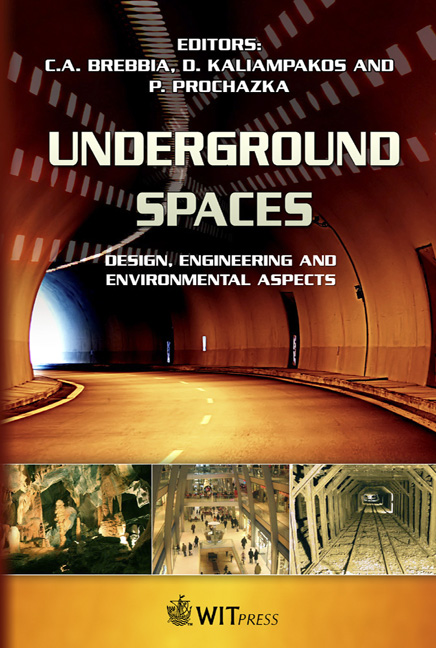CFD Simulation Of Aerodynamic Resistance In Underground Spaces Ventilation
Price
Free (open access)
Transaction
Volume
102
Pages
10
Page Range
119 - 128
Published
2008
Size
2,561 kb
Paper DOI
10.2495/US080131
Copyright
WIT Press
Author(s)
I. Diego, S. Torno & J. Toraño
Abstract
The main problems once someone gets deep inside an underground space are the lack of light and air. If the underground space is long enough or there are pollutants or heat sources inside the space the need for a ventilation system becomes essential. In the particular case of road tunnels, the need to dissipate engines fumes also raises the need to account for the high risk present of fire inside the tunnels. It seems clear that whatever the underground space is designed for, a ventilation system must be present during the construction and subsequent operative phase of the installation. A state of the art tool to calculate the ventilation system is computational fluid dynamics (CFD). The air in the underground space is discretized in finite volumes and mathematical methods are used to obtain the pressure and velocity fields all over the domain, capturing and analyzing all possible flow details, no matter the geometry if the mesh is fine enough. One of the main goals in classical ventilation calculations is to obtain the overall pressure drop of the air as it passes through the cavity, as this will guide the sizing and selection of the installation fan(s). This paper uses the commercial CFD code Ansys CFX 10.0 to calculate the pressure losses in a tunnel installation, comparing the results with the classical frictional losses calculations procedure. These simulations will guide a methodology of using CFD to calculate sections of the underground ventilation or even, if mesh sizes and computer means are big enough, to fully calculate ventilation over all domains. These studies have been carried out in the framework of the Research Project CTM2005-00187/TECNO, \“Prediction models and prevention systems in the particle atmospheric contamination in an industrial environment” of the Spanish National R+D Plan of the Ministry of Education and Science, 2004– 2007 period. Keywords: CFD, turbulence, tunnel resistance, pressure drop.
Keywords
CFD, turbulence, tunnel resistance, pressure drop.





